Something a bit different from me this week, and for once I’m not going to talk about birds! Whilst I do love my birds, at heart I adore all aspects of natural history. My happy place is in the middle of a wildflower meadow in spring listening to the bird song and the insects busy flitting from flower to flower. So naturally, I always stop to acknowledge any variety of nature that pops up around the Park.
This week I’d like to take a look at some of the wildflowers that grow here at Wingham Wildlife Park. You’ll notice I’m referring to these beauts as wildflowers and not as weeds… you know what they say, one person’s weed is another person’s wildflower right!?
Some might look at a patch of nettles and say, “look at all of those weeds”, whereas my take on that view is “WOW! Look at all that caterpillar food!”. I’m not going to list every plant that grows around the Park, as to be honest I’ve probably not found or identified them all yet! So instead, I’m going to take a look at some of my favourites that I’ve seen this spring and summer.
Getting started

Firstly, if you want to get into wildflowers get yourself a good wildflower ID book. I use the Collins guide, which also comes in an app I believe, and you can see my copy is a bit battered where I take it out into the field with me so often. There’s also another nifty app you can download called Plant Net which is great if you’re just starting out. It’s not always 100% accurate but it’s great to narrow down which group of plants you should be looking for in the ID book. I also went on a wildflower course (and several guided wildflower walks) at Sandwich Bay Bird Observatory which really helped me understand how to use the ID keys in the books!
Forget-me-not

One of my favourite plants to discover, not just here at the Park but out on walks as well, are these Forget-me-nots. I just love the blue and pink flowers and often see them growing amongst the bamboo in the Flamingo enclosure. We do have a native species of Forget-me-not called Wood Forget-me-not, but varieties of this flower for the garden are very popular. So, I think the ones we get here are probably a garden escapee. I adore them just the same. I think it’s super cool that when an insect has pollinated a forget-me-not flower, the flower actually changes colour to signal to other insects that it has already been pollinated. The centre of the flower will change from an attractive yellow to insects to signal lots of nectar to a less inviting white!
Willowherb
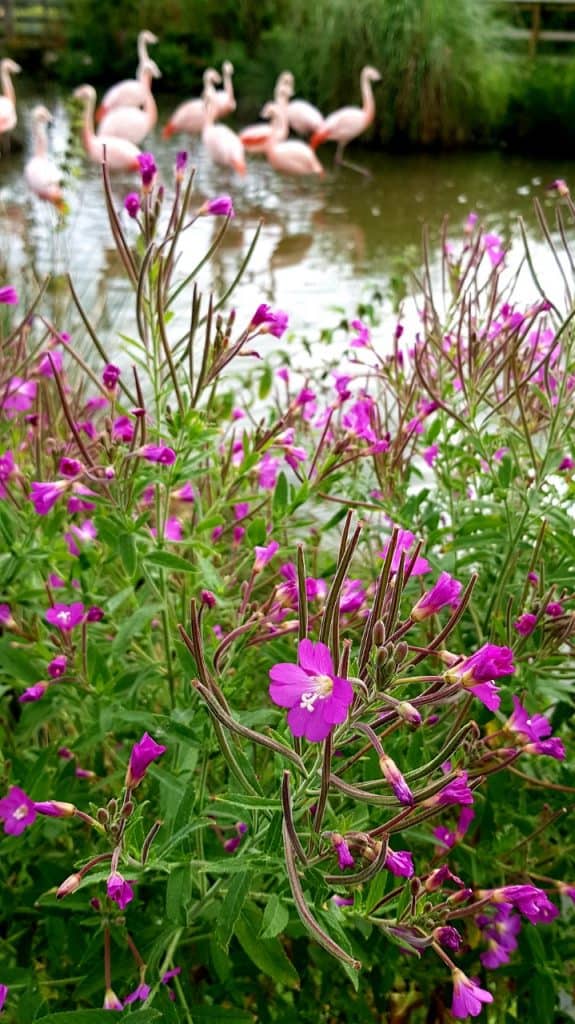
Another firm favourite is Willowherb… just a heads up, you will quickly realise that I love flowers that are either pink or blue. This is such a striking plant with pink flowers and this group of plants are very good at colonising new areas. This is down to their specially adapted seeds which have a little parachute allowing them to disperse across huge distances. Rather fittingly, you can see a swathe of pink Willowherb in our Flamingo enclosure at the moment.
Vervain
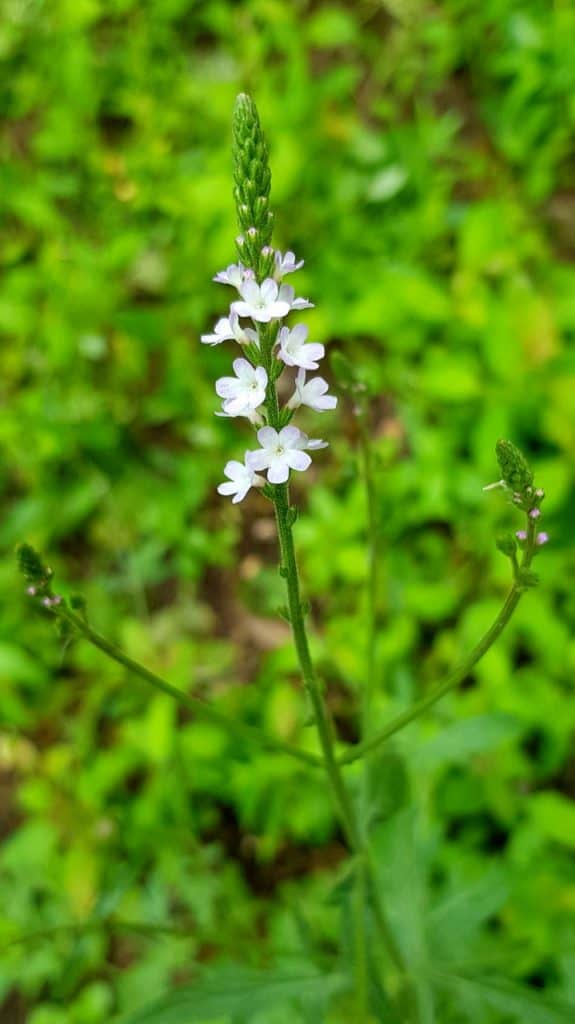
Vervain is a naturalised plant, which means a plant that was probably introduced to the UK a long time ago (Neolithic times in this case) which has been able to adapt really well to their new environment. I found this one by our Keeper’s kitchen and I think the little cluster of flowers are very pretty.
Historically this plant was used as a protection charm against witches and black magic since Roman times. In the 17th century it was also used to treat illnesses such as jaundice and ulcers and was even used to aid childbirth. During the Middle Ages it was used to treat the Plague. It is still used today to help treat depression and nervous disorders.
Redshank
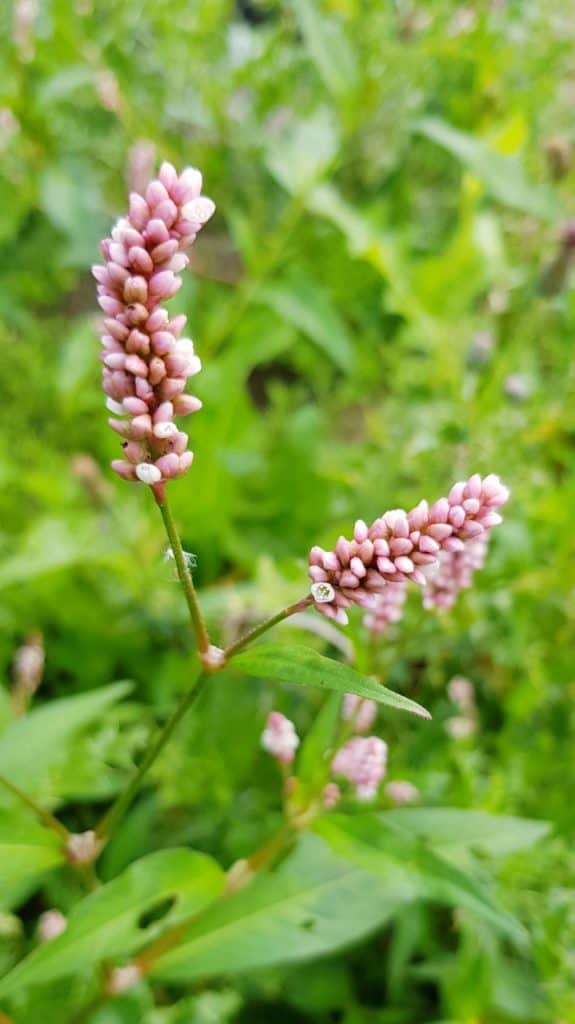
I love this plant! Not only is it pink but it also shares a name with a bird. This plant can be a bit of a problem in cultivated fields and gardens and a plant that is sometimes pollinated by insects but is usually self-pollinated. The seeds can remain dormant in the soil for 45 years! Another one that loves the Flamingo enclosure here and generally wet places around the Park. It is pretty well distributed throughout the British Isles.
Fleabane
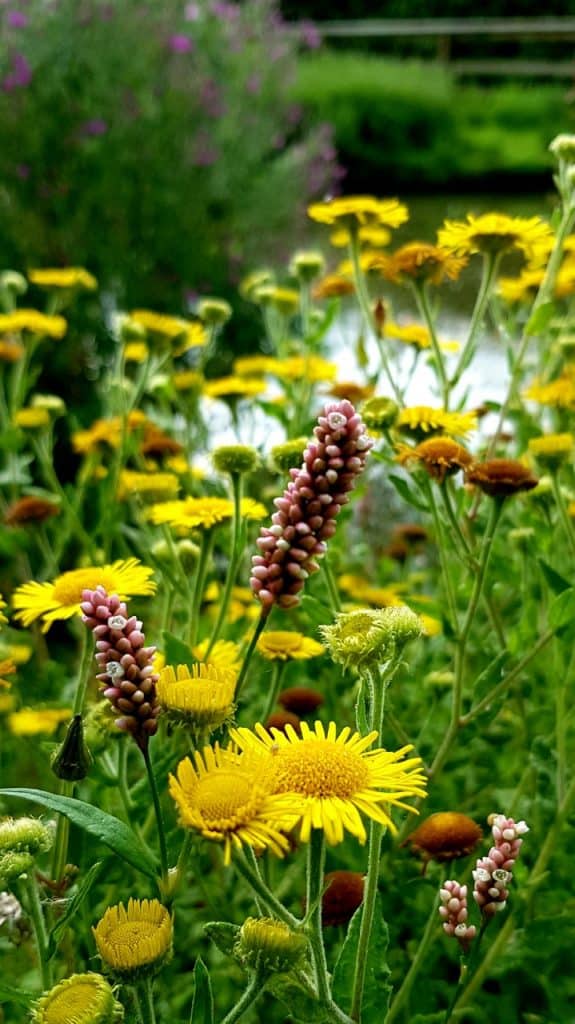
Fleabane is a pretty wildflower found in England and Wales, and an absolute hit with a whole host of insects. It has traditionally been used as an insect repellent. In the past it was kept in houses specifically to deter fleas! It’s so good at attracting insects that this baffled me at first. Then I found out that it was either dried and then burned or hung in rooms. Herbalists also claim that Fleabane is great to help with itchy skin and other skin disorders. A useful plant to have around! It has lots of local names including harvest flower, Job’s tears, mare’s fat and my personal favourite the pig-daisy.
Scarlet Pimpernel

This is one of the first flowers that got me interested in wildflowers! The bright red flowers aren’t easy to miss, and apparently they also come in a purple version as well, though I’ve not come across those yet. This plant seems to love the lake and the corridor behind our Pheasant aviaries and some of the picnic areas. It’s widespread throughout the UK, though mostly confined to the coasts in Scotland. The flowers are so vibrant that it is sometimes referred to as “shepherd’s weatherglass” or “old man’s weathervane”. Such a charming little wildflower.
St John’s Wort
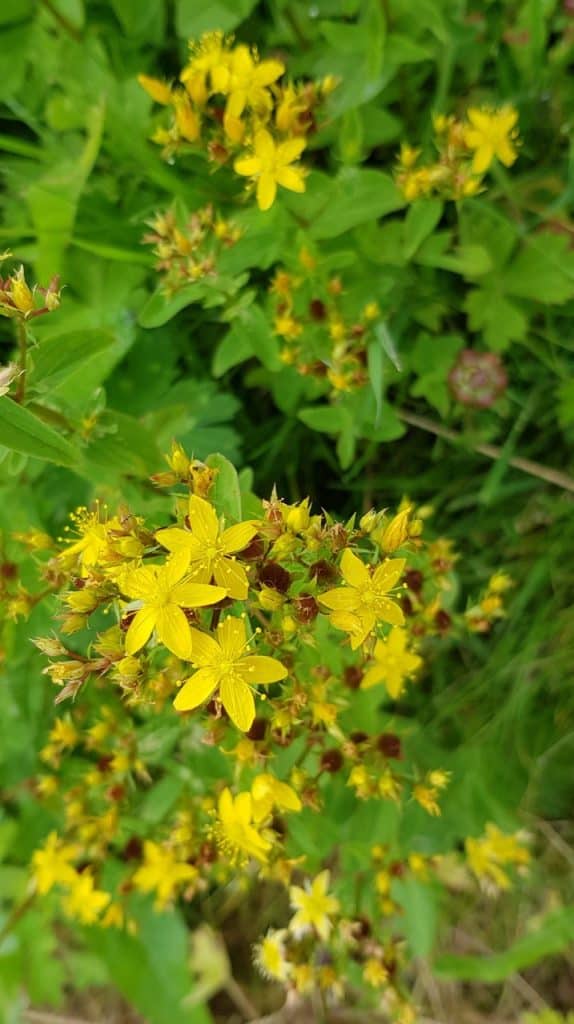
Look out for this distinctive plant around the lake, and also other wet areas like the Pelican and Flamingo enclosures. The star-shaped flowers of St. John’s Wort give of a bit off a “foxy” smell. A common flower in Britain, it was again traditionally used as a remedy for all kinds of illnesses including burns and wounds. Another plant that is still used today to treat mild depression, though there is debate on how effective it is. This plant also has a lot of myth and legend associated with it as it’s stems can exude a blood-red juice and was the focus of many pagan rituals and festivals.
Selfheal
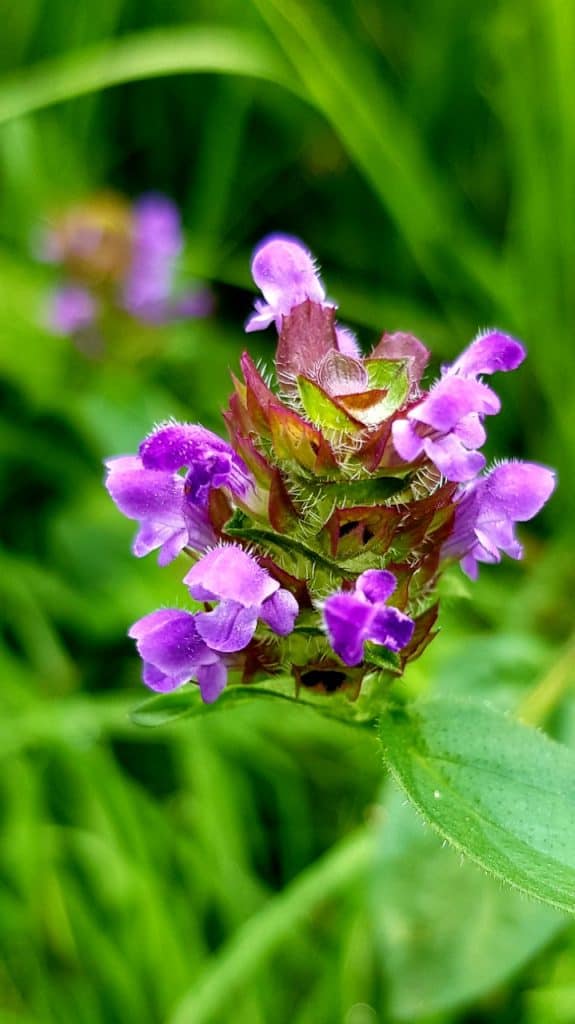
Another firm favourite of mine and I just love the tiny purple flowers. This is a creeping plant that loves short grassland and is often found on garden turf and along roadside verges. I see it quite a bit in the grassy areas throughout the Park and this plant is an excellent source of nectar for bees and wasps. Another plant traditionally used in herbal remedies, particularly for sore throats.
Field Mustard

Another plant that is loved by caterpillars! It seems to like disturbed ground and the Ancient Greeks believed that it was an antidote to all poisons. Today it’s quite nice to use the edible leaves in salads. This one was growing in our Tropical House, but I’ve seen it around the Park as well. Lovely little yellow flowers!
Bugle

I always thought Bugle was a funny name for a plant. It spreads via long runners and the purple flower spikes grow from dense mats of dark green and purple leaves. This plant also seems to have colonised our Tropical House but it likes the wet areas around the Park too. Bumblebees love it and it is another plant that was popular in herbal remedies, particularly to stop bleeding.
Speedwell
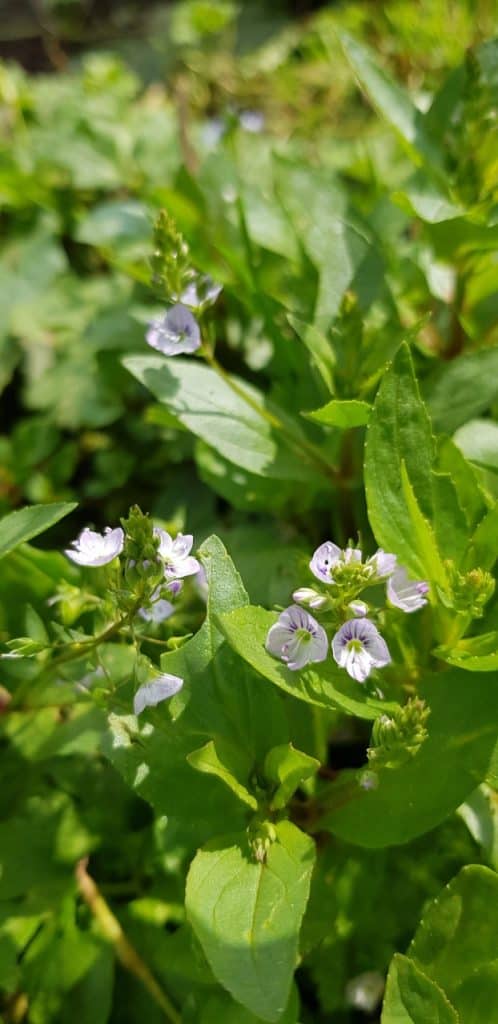
Once you know what this flower looks like you’ll probably see it everywhere. It loves roadsides and lawns and I see it growing all over the place around the Park. There are lots of different speedwells that can be tricky to tell apart but I think I have identified Germander Speedwell and Water-speedwell at the Park. Solitary bees love drinking the nectar from the beautiful blue flowers.
Pollinating wildflowers
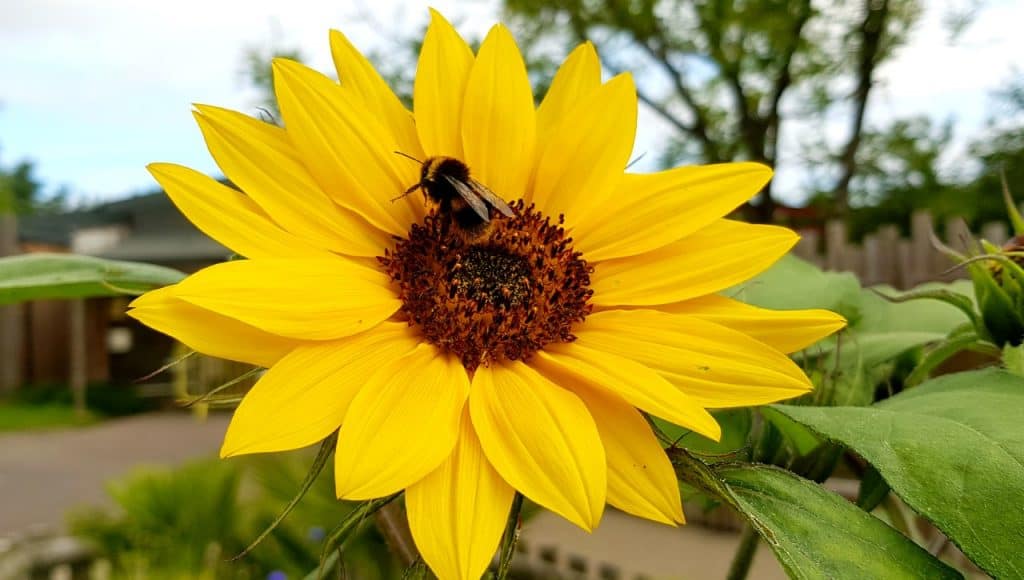
One of the main reasons I think wildflowers are important is because they support our pollinators. Insects like bees, wasps, flies, moths, butterflies and beetles are crucial to the survival of our ecosystem. Without them we couldn’t survive as 80% of our food crops depend on these hard-working insects to reproduce and grow. Did you know that wild bees and other pollinators are in decline?

One of the best things you can do at home to help pollinators is to give the lawn mower a rest and not cut the grass as often. You’ll be surprised by how many flowers pop up if left for a little while in spring and summer. I often like to turn over a patch of soil to see what grows as sometimes seeds remain dormant in the soil until it is disturbed.

And of course, planting lots of flowers for insects is a fantastic way to attract more insects and wildlife to the garden. You’ll notice that around the Park we have lots of flowers planted in between our enclosures to help provide our local insects with plenty of nectar. The Royal Horticultural Society have a fantastic list of plants that you can plant in your garden which are great for pollinators. I like to plant the ones on the wildflower list of course. Check it out here: Plants for Pollinators advice and downloadable lists / RHS Gardening
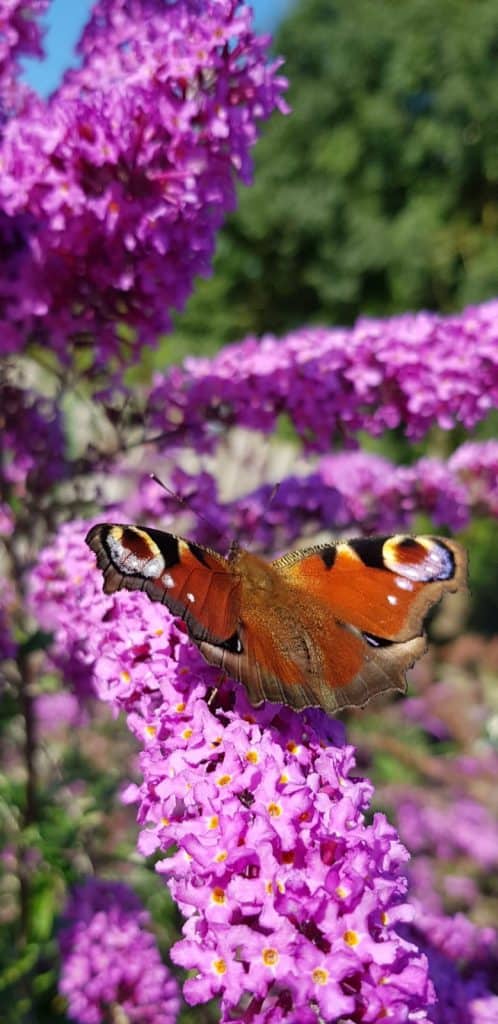
I hope you enjoyed learning about some of the wildflowers we find here at Wingham Wildlife Park. You’ll have to send in your pictures to our social media if you spot any that I missed! If you want a quick pollinator fix on your next visit, check out one of the many Buddleia bushes, also known as butterfly bushes, around the Park. As their name suggests, they are fantastic nectar rich plants for Butterflies and always seem to be covered in them on a sunny day. Until next time when I have some more nerdy nature facts for you. I’ll leave you with a video of Barry the Pelican who doesn’t share my love for wildflowers… he loves ripping up the Buttercups that appear in his enclosure!


